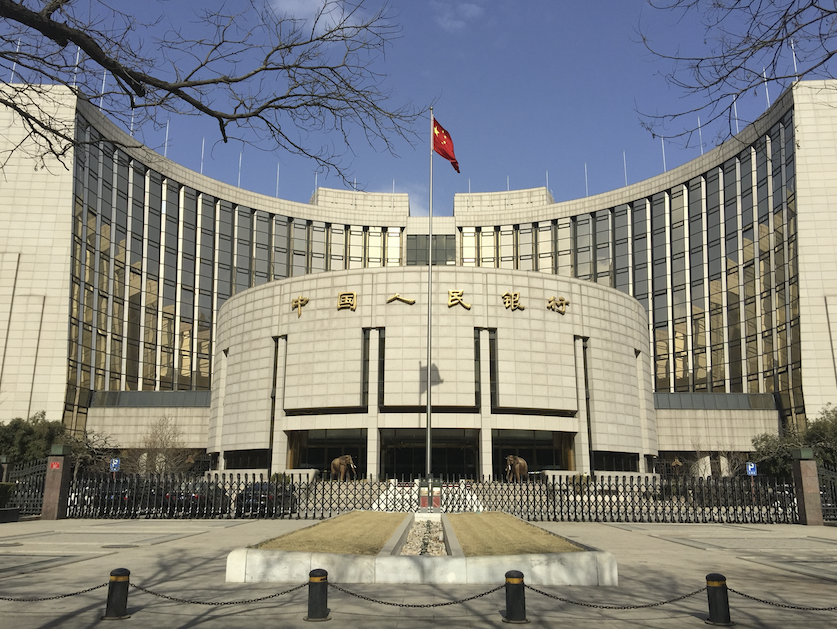China Tries to Reduce its Corporate Debt
 On October 10th, the State Council of China issued “Opinions on Actively and Steadily Reducing Corporate Leverage Ratio,” its latest attempt to address the problem of mounting corporate debt. The 10,000-word document enumerated seven strategies through which corporations can presumably reduce their debt burden.
On October 10th, the State Council of China issued “Opinions on Actively and Steadily Reducing Corporate Leverage Ratio,” its latest attempt to address the problem of mounting corporate debt. The 10,000-word document enumerated seven strategies through which corporations can presumably reduce their debt burden.
In the aftermath of the 2008 financial crisis, a number of Chinese companies—state-owned enterprises (SOEs) and privately-held companies alike—struggled to survive. Many borrowed heavily from banks and issued corporate bonds. According to WallstreetCN.com, one of the largest financial information providers in China, as of 2014, corporate leverage ratio in China reached 140 percent, an excessive ratio compared to Germany (49 percent) and the United States (72 percent).
In certain industries, companies have begun to default on debt. Dongbei Special Steel Group, an SOE owned by the provincial government of Liaoning, defaulted nine times on its corporate bonds worth 5.8 billion RMB before it declared bankruptcy. Shanxi Huayu Energy, a subsidiary of China National Coal Group, also failed to repay 680 million RMB to bond investors. Prior to this current trend, never had a single SOE defaulted in the business history of China, let alone on a scale of this sort.
The most striking solution that the government suggested in its guidelines is a debt-for-equity swap. Under this mechanism, when corporations default, creditors will have to forgive some or all of the debt in exchange for shares in the company. In fact, this is the best strategy for creditors in most cases since heavily indebted corporations can go bankrupt at any time. In contrast, by obtaining some equity—and, therefore, decision-making power—through debt-for-equity swaps, creditors can potentially save the sinking ships. Meanwhile, once creditors cancel debt, corporate leverage ratio will decrease significantly, at least in nominal terms.
Nevertheless, debt-for-equity swaps create serious problems. To begin with, this strategy encourages debtors to default to some extent. Indebted SOEs understand that creditors, often times state-owned commercial banks or their proxies, will eventually cancel debt and restructure their companies. However, these creditors are not professional strategy & operations consultants. It is rather unrealistic to count on them to save the failing businesses. In addition, huge corporate debt does not immediately get repaid once creditors become shareholders. From society’s point of view, if these businesses cannot start to make profit, the money simply evaporates.
Aware of these issues, the government sets guidelines for debt-for-equity swaps in the document. The three most important ones are as follows: 1) Creditor banks should only participate in debt-for-equity swaps through “qualified implementing agencies,” 2) The government will not approve bailouts, and 3) Firms that no longer have any hope of recovering from losses—or zombie firms—must not exchange equity for debt cancellation. The document, however, did not give clear definition of “qualified implementing agencies.” It also failed to provide a test for determining whether a company is a zombie firm or not.
Six days after the State Council unveiled the document, Yunnan Tin Group struck a swap deal with China Construction Bank. According to the contract, China Construction Bank (CCB) will raise 10 billion RMB from the market through its subsidiary, CCB Fund, to pay back existing debt for Yunnan Tin Group. In return, CCB Fund will obtain equity in the company. The deal will lower Yunnan Tin Group’s corporate leverage ratio by 15 percentage points.
The debt-for-equity swap is not a panacea. Indeed, it can even evolve into a bottomless pit. The most pressing issue facing the Chinese government, hence, is to restructure the spoiled SOEs, breaking them up or making them understand that there will not be unlimited access to finance in the future.
